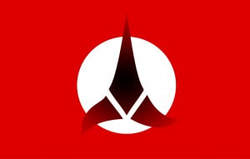
Klingon fans rejoice! You’ve been diligently learning a made-up language for years, only to experience the misunderstanding of mainstream society. But now…
chenmoH Hol Qat!
Made up languages are popular! The well-known machine translator, Bing, offers Klingon as a legitimate language choice (go ahead, try it out with the phrases we’ve included) and Living Languages now includes Dothraki as a language you can learn using their system. LanguageTran hasn’t yet hired an English to Klingon translator yet, but…well…it does seem like that’s the direction the culture is moving in. I wouldn’t get an advanced degree in Klingon or Dothraki just yet, but all signs are pointing to being able to do that one day…
Where did made up languages (conlang) begin, anyway? The first kinds of made up languages were mystical. Hildegard von Bingen in the 12th century created a language the “lingua ignota” – not a complete language, but one with strange words interspersed with Latin. In the 16th century, John Dee and Edward Kelley communicated with angels using a made up language called Enochian. The sufis used a language called Balaibalan in the 16th century that looks a little like Arabic with some Persian and Turkish mixed in.
tlhIngan ‘ej conlangs latlh
The fictional languages made up by Tolkien and the writers of Star Trek are the fictional languages that have caught modern man by storm, though. These are the languages that used to be kept secret by those who learned them, something one did but only told certain people what you did. Now, though, fictional languages are becoming more and more mainstream. The Klingon Language Institute, for example, dedicated to the Klingon language. As they mention on their site, this is an international group, representing over 30 countries on all 7 continents (really? Antarctica?). Klingon is the only fictional language actually created by a trained linguist, which might account for why it is still studied to this day, and so seriously.
Klingon got its start after Scottie, played by James Doohan, ad libbed a few lines during a Star Trek movie. After that, in 1984, Marc Okrand formalized the language in a book called the Klingon Dictionary. The rest, as they say, is history. If you want to keep up with the latest Klingon research, the quarterly journal you’ll need is called HolQeD.
latlh Hol, laH nID SoH
If you’d like to try learning a fictional language, here are five more languages you can actually learn:
1. Futurama’s Alienese – This language was created by the show for inside jokes, but was too easy for fans to learn, so they made it more difficult. It’s still based on the 26 character English alphabet.
2. Lapine from Watership Down – For pure adorableness, learn Lapine, the language of the rabbits in Watership Down. In this case, fans have developed the language into a fully functional one.
3. Na’avi from Avatar – This language was developed by Paul Frommer, a linguist from USC, who, with the fans of the movie, continued to develop the language after the movie was over.
4. Dothraki from the Game of Thrones – As we mentioned before, this one is now available through Living Languages. You can actually learn it in the same way you might learn Spanish or French.
5. Elvish from Lord of the Rings – Elvish is based loosely on both Finnish and Welsh, two languages that Tolkien had studied. He actually created the languages before starting on the books.
vaj pa’ ‘oH Daghaj
All you need to get started learning a new language! Why not begin today?

 RSS Feed
RSS Feed